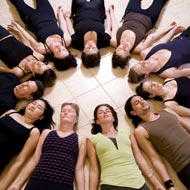- Aromatherapy (36)
- Benefits of Yoga (282)
- Home Remedies (1087)
- massage therapy (9)
- Preventive Therapy (135)
- Running (41)
- Skin Care (15)
- Stress Relief (25)
- Stretching (5)
- walking (33)
- Womens Health (14)
- Yoga Benefits for Pregnant Women (16)
- Yoga Benefits for Students (3)
- Yoga for Children (11)
- Yoga for Holistic Living (37)
- Yoga for Midlife Crisis (3)
- Yoga for Senior Citizens (2)
- Yoga for the Workplace (1)
- Yoga Health Tips (185)
- Yoga Practice during Menstruation (5)
Yoga Nidra Poses for Maximum Relaxation

Yoga consists of a system of physical and mental practices that originated in India more than 5000 years ago. This ancient practise has since then branched out and gained popularity worldwide. One such branch of yoga is yoga nidra.
Yoga nidra can be translated as ‘yoga sleep’ or ‘sleep of the yogic’ from Sanskrit. Yoga nidra is a state of conscious deep sleep. Although you might appear to be asleep, your consciousness will be functioning at a deeper level of awareness. It is considered to be one of the best ways to get in touch with your subconscious mind.
Unless you are free from muscular and emotional tensions, you cannot reach a relaxed state of mind, often resulting in fatigue or restlessness after you have woken up. Yoga nidra can help you relax completely.
It is one of the deepest types of meditations. If you practise yoga nidra properly, you would be able to achieve a sublime state of consciousness and awareness spiritually, emotionally, mentally, and physically.
Before you start to perform yoga nidra poses, make sure you are amidst silent surroundings. This is because suddenly shocking the body from the nidra state into a normal state is unadvisable. Wear comfortable clothing so that nothing constricts you. It is best to perform this exercise at the end of your day to relieve yourself of any tension.
Before beginning yoga nidra, do some exercises to warm up your whole body. In order to perform yoga nidra properly, one of the best poses to adopt is the Shavasana or the corpse pose. This pose might seem simple but this exercise requires a lot of concentration and will develop only through continued practice. Lie down flat on the floor with your limbs slightly away from your body. Make sure you are lying symmetrically as symmetry provides proper space for all body parts to relax. Take deep breaths and try to concentrate on the centre of your forehead between the eyes. Hold this pose for at least 15 minutes. Clear your mind of any thoughts. Make sure you do not fall asleep and remain fully focused on yourself and your body.
In this state, the body is going through a number of physiological changes. Given that there is no exercise, the body’s energy loss in minimum and your entire system is relaxed. Given that the physical body is relaxed, the mind starts to get calmer as well. As you enter this state of deep relaxation, you will feel your mind grow clearer and more detached from the worldly state of affairs.
- RSS Feeds -
- All posts
- All comments
- 10 Amazing Benefits of "Yoga Nidra" In Sanskrit, ‘yoga’ means ‘union’ and ‘nidra&rs...
- Easy Relaxation With Yoga Nidra What is Nidra Yoga Meditation? ...
- Sudarshan Kriya - A Stress Buster The Sudarshan Kriya in Yoga can be described as a rhythmic breathing techniqu...
- Yoga Benefits for Beginners There are several joints in the body that require movement and lubrication. T...